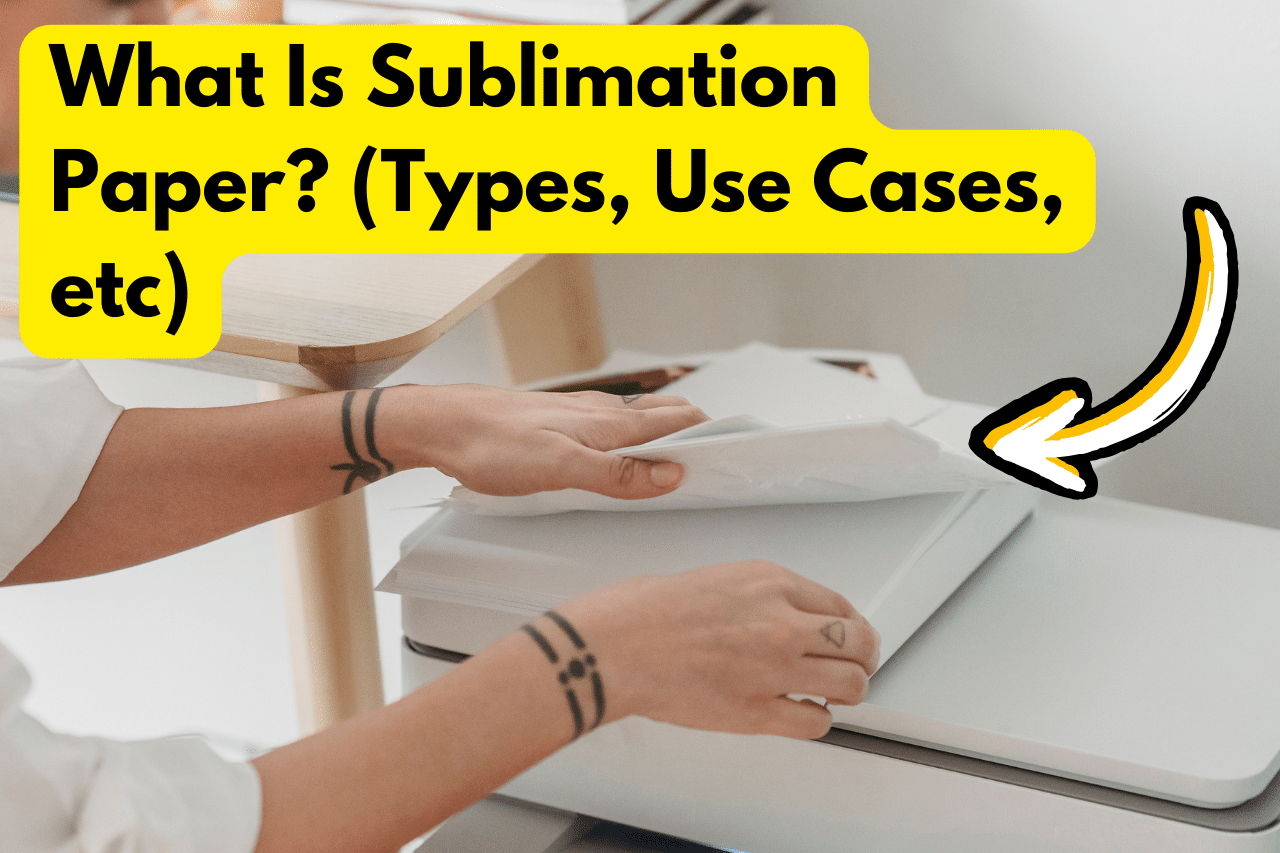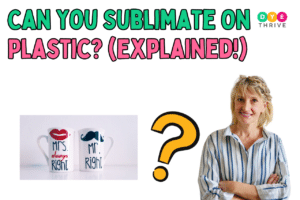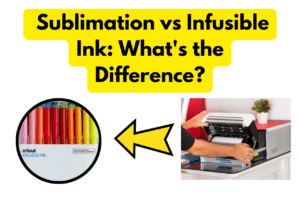Sublimation printing allows you to create vibrant, permanent prints on fabrics, ceramics, metals, and other materials.
But the unsung hero that makes it all possible is that special paper, the sublimation paper.
In this beginner’s guide, we will discuss all the details about sublimation paper that you need to know to create stunning projects.
You May Also Like:
What is a Sublimation Paper?
Sublimation paper is a specialty transfer paper coated with a polyester film designed to absorb and release dispersed dye sublimation inks.
When heat and pressure are applied, the inks become gaseous and permanently bond with substrates like fabrics, ceramics, and metals.
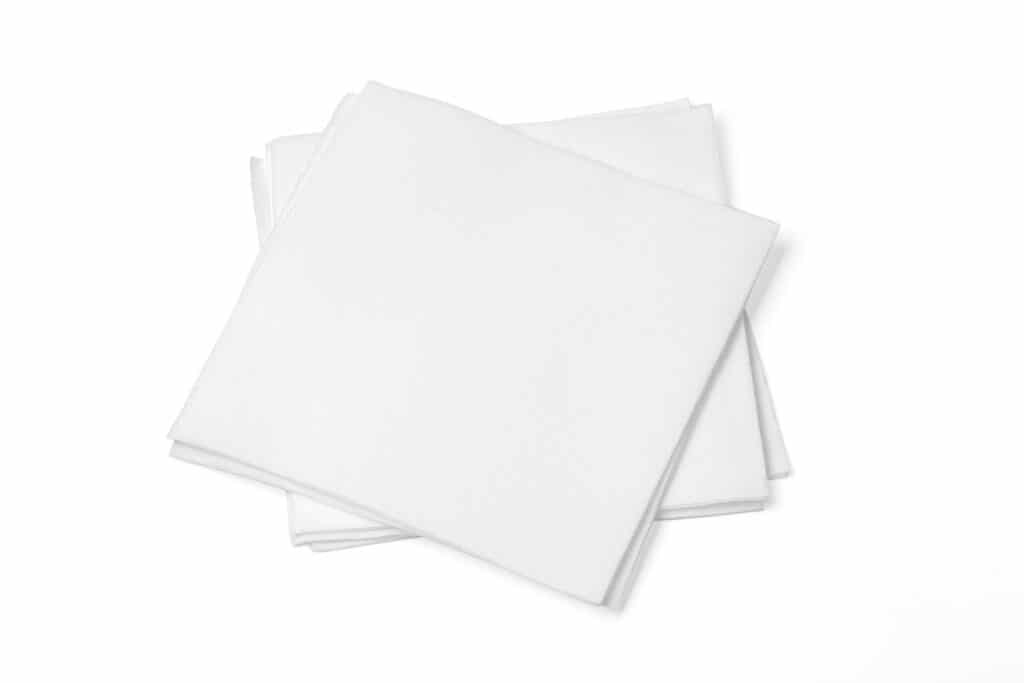
The polymer coating ensures the ink stays on the surface and does not get absorbed into the paper, facilitating smooth and vibrant transfers.
Here are some of the most important features of quality sublimation papers:
- Ink retention coating: The proprietary polyester coating traps ink for transfer. This special coating allows the ink to sit on top of the paper rather than soaking into the fibers like regular paper.
- Brightness and whiteness: Vibrant blank canvas for sublimation inks. The bright white background of the paper provides the perfect base for sublimation inks to look their most vivid.
- Smoothness: Critical for detailed prints without banding or blotching. The smooth, even surface of sublimation paper allows for fine details and gradients without any banding, blotching, or distortion from texture.
- Heat resistance: Withstands high heat pressing without burning or warping. Sublimation paper is designed to resist scorching or warping when exposed to the high heat of heat presses, usually around 400°F.
- Dimensional stability: Resists curling or shifting during printing and pressing. Quality sublimation papers will not warp, curl, or shift around even when subjected to moisture and pressure.
Types of Sublimation Paper
Sublimation paper comes in several types, each suited for different purposes. Understanding the key differences will help you choose the right paper for your projects.
Universal Sublimation Paper
The most readily accessible and budget-friendly sublimation paper variety is universal paper.
As its name denotes, universal sublimation paper provides broadly decent performance across an array of common applications, including fabric decoration, hard goods imprinting, and more.
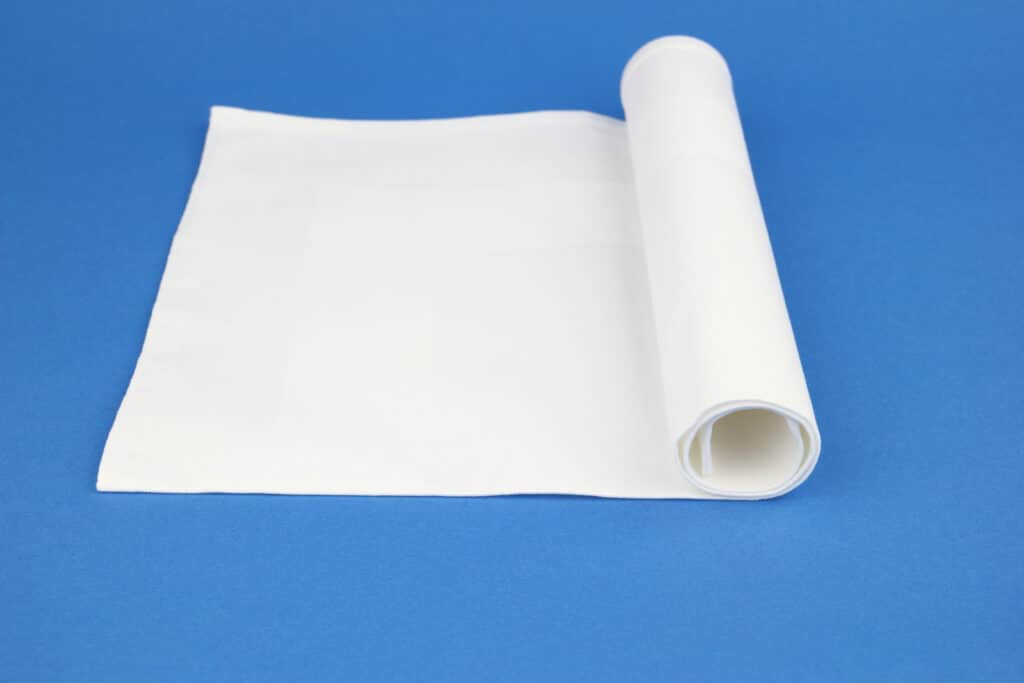
Its versatile polymeric coating facilitates adequate dye release across both textile and non-textile substrates without optimization for any given material.
Key features:
- Works on a variety of fabrics
- Good value
- Recommended for new users
Best for: General purpose sublimation
High-Release Sublimation Papers
High-release paper allows for a clean transfer of ink from the paper to the substrate. The smooth coating prevents ink from bleeding or leaving residue on the paper.
Such exceptional print resolution suits transfer jobs that aim to mimic sophisticated digital artwork or photography quality across the imprinted merchandise.
Key features
- Crisp transfer of intricate designs
- Prevents smudging
- Leaves no ink residue
Best for: Delicate and detailed designs
Fast Drying Sublimation Paper
This paper type uses special coatings to accelerate ink drying time. It improves efficiency in high-volume production environments.
For businesses printing large volumes of custom items across multiple shifts, “fast-drying” materials offer significant advantages.
Their rapid drying time speeds up production, allowing you to complete more orders and potentially increase profitability. While these materials typically cost more than standard options, the increased productivity can translate to higher overall income.
Key Features:
- Dries ink quicker
- Boosts productivity
- Good for high-volume orders
Best for: Commercial production
Specialty Sublimation Paper
Specialized paper is engineered for specific materials like metals, ceramics, fabrics with high polyester content, leather, and more. The coating is optimized for superior image quality on those substrates.
Key Features
- Custom coatings
- Maximum ink transfer
- Premium image quality
- Expensive
Best for: Niche materials like mugs, wood, metals, etc.
What is Sublimation Paper Used For?
The transferability of sublimation inks makes sublimation paper incredibly versatile. Common uses include:
- Apparel: T-shirts, leggings, sportswear, hats, shoes, and more. From casual t-shirts to performance athletic wear, sublimation allows for permanent, full-color prints that hold up through washing and wear.
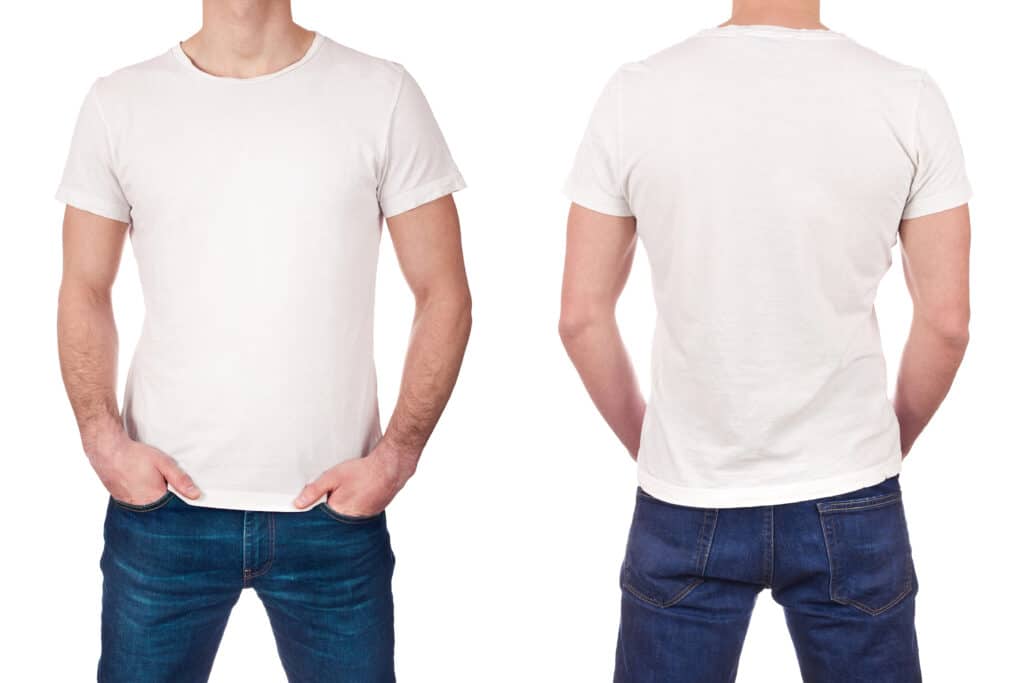
- Home décor: Blankets, pillows, curtains, towels, upholstery. Sublimation printing enables the customization of textiles around the home, from decorative flourishes on curtains to family photos printed on blankets.
- Hard goods: Mugs, plates, clocks, mirrors, keychains, glassware. Coated ceramics and metals accept sublimation inks, allowing for personalized dishware, engraved-style plaques, durable prints on mirrors, and much more.
- Signage and displays: Banners, flags, trade show graphics, backdrops. Large format sublimation creates vibrant, eye-catching displays for events, retail stores, or office spaces.
- Accessories: Phone cases, luggage tags, guitar picks, key fobs. People love customizing their gadgets and gear, so accessories make great personalized sublimation products.
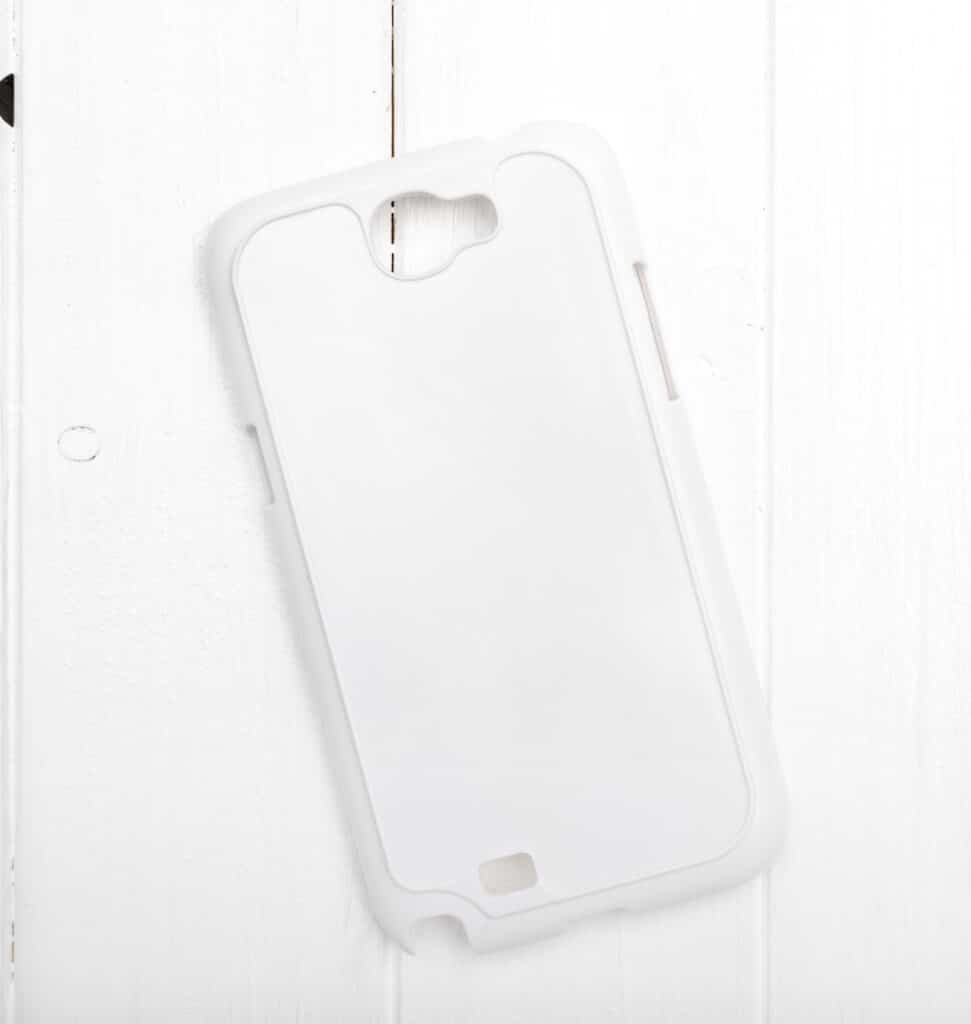
- Awards and engraving: Plaques, trophies, personalized jewelry. Sublimation mimics the look of engraved metals for an affordable alternative for awards and recognition.
Anywhere you want photorealistic, customizable full-color prints, sublimation delivers impressive capabilities.
How to Use Sublimation Paper
Using sublimation paper follows a direct process:
1. Print Design
Set artwork to a sublimation printer with sublimation inks and compatible sublimation paper. Use a high-quality printer intended for sublimation for optimal results. Select settings for sublimation paper and inks.
2. Dry Ink
Wait for the printed transfer to dry to avoid smudging. A heat gun speeds up drying. Transfers must be fully dried before pressing to prevent blurred or distorted images. Air drying flat prevents smearing.
3. Cut Transfer
Trim the printed transfer to the desired size or shape. Oversize transfers may cause ghosting. Cutting to the specific shape prevents excess dyes from causing ghost images on the edges. Round corners help avoid lifting and peeling.
4. Secure Transfer
Position transfer on the substrate and secure smoothly with heat tape. Heat tape, especially the foam type, keeps the paper flush with the surface and resists movement. This prevents ghosting or blurring.
5. Press Transfer
Apply heat and pressure with a heat press according to material specs. Proper time, temperature, and pressure are essential for crisp transfers, so follow material and paper specs.
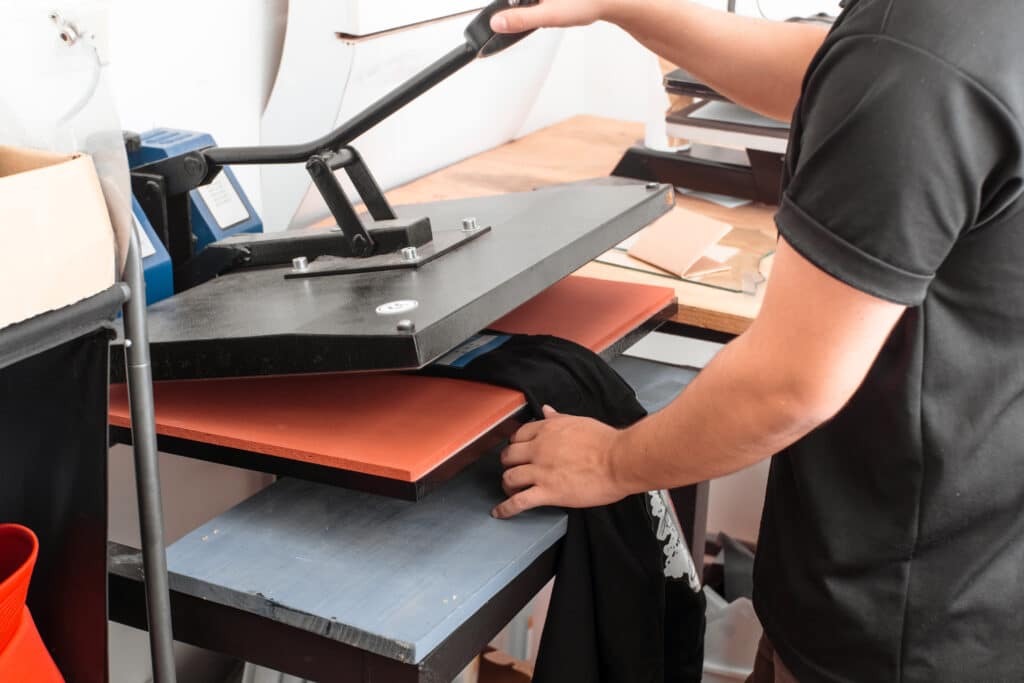
6. Cool And Finish
Allow the material to cool before removing the carrier paper to reveal the finished print. Abruptly removing the hot paper can lift the edges of the transfer. Cooling secures the bonds before the big reveal.
Best Sublimation Papers In The Market
With countless options on the market, here are some top-rated sublimation papers to consider:
Always test new papers with your printer and follow any specific instructions to avoid issues. Minor printer adjustments may be needed for optimal results.
Frequently Asked Questions
Below are a few frequently asked questions:
Can you use sublimation paper in any printer?
No, sublimation paper only works with dye-sublimation ink and printers.
The paper’s coating is specially formulated to pair with sublimation inks. Using it in a standard inkjet printer risks damaging heads and gives poor results.
What is the difference between a paper and a sublimation paper?
Regular paper absorbs ink into its fibers, while sublimation paper uses a polymer coating to trap ink on the surface for transfer. Sublimation paper also withstands high heat pressing. The coating makes sublimation paper impervious to ink absorption.
Which is better sublimation or transfer paper?
Sublimation paper is better than transfer paper because sublimation offers more durability.
Sublimation creates permanent prints that become part of the material, while transfer paper sits on the surface and can peel or crack over time.
Wrapping Up
When used properly, the right sublimation paper acts as the vehicle for transferring dazzling, lasting prints onto substrates through heat and pressure.
Understanding the types, applications, and characteristics of sublimation paper is the essential first step to exploring the creative possibilities of sublimation printing confidently.
If you like this article, make sure to share it with your family and friends!

